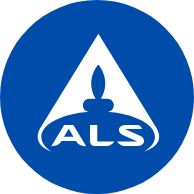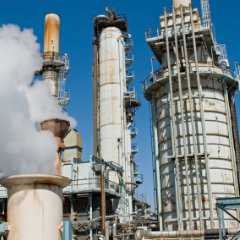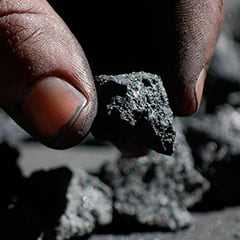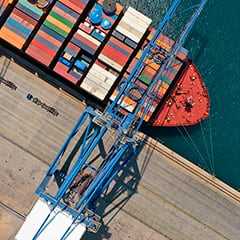eSource 134: Marine Diesel Engine Design and Oil Requirements

Marine diesel engines can be classified by the operating cycle (Two-Stroke or Four Stroke), their construction (crosshead piston, trunk piston, or opposed piston), and their speed (Slow 0-300 RPM, Medium 300-1000 RPM, High >1000 RPM).
Two-stroke marine diesel engines are preferred for powering propulsion due to superior power output and improved fuel economy compared to the Four-stroke marine diesel engines. The Four-Stroke engines are relatively smaller in size in size and can produce higher RPM yet are not as extensively used as main engines for merchant marine applications.
Different physical properties and performance levels are required for different engine oils depending on the engine. Marine diesel engine construction such as Crosshead Piston or Trunk Piston will have separate oil performance requirements as well as condition monitoring considerations. The performance properties of marine engine oils consider the fuel type burned as well as the mechanical configuration of the engine.

Crosshead Piston Engine Configuration:
Crosshead engines generally burn residual fuels, a classification for the heavier oils, known as No. 5 and No. 6 fuel oils also known as Bunker fuels. The crosshead engine is designed for increased maintainability of the top end of the engine allowing the pistons to be easily removed. The piston rod is mounted on the underside of the piston and connected to the crosshead by a single nut in double acting engines. Large two-stroke marine diesel engines use this configuration. In this type of engine, separate systems are used for Cylinder lubrication (which is a total-loss system) and the System Crankcase lubrication.
Crosshead Piston Cylinder Oil – Total Loss System:
A total-loss oiling system is an engine lubrication system where the oil is introduced into the engine, and then either burned or ejected overboard. Oil is routinely added to make up the loss. For oil condition, contamination, and wear monitoring it is important to note the sump volume as well as the amount and frequency of the new oil addition. The typical TBN range for Cylinder oil is 30 to 70 mg KOH/g with a viscosity grade of SAE 50. Cylinder oils will be formulated to have a high alkalinity (TBN) to neutralize acids such as sulfuric acid, carboxylic acid, and nitric acid. The acids are the result of the initial phase of oil oxidation as well as sulfur in the fuel.
Crosshead Piston Crankcase System Oils:
The crankcase of the crosshead engine is separated from the combustion side. The oil can be contaminated by combustion by-products or used cylinder lubricant. Typical Crankcase System oils have a TBN between 5-14 mg.
KOH/g, a viscosity of SAE 30, and are formulated with detergents and dispersants. These oils are formulated to have good water and sludge separation properties so that water and sludge contaminants may be readily removed by normal shipboard purification processes. Normally the system oil is not designed for oil change at regular intervals therefore it is important to monitor the oil for condition, contamination, and wear metals.
Trunk Piston Engine Configuration:
The Trunk Piston engine configuration was designed to reduce engine height. The medium speed trunk piston diesel engines (300-1000 RPM) have a single lubrication system. Due to the nature of the splash lubrication method, extreme pressure (EP)/anti-wear properties are not needed but they are included in the formulation. This is done to increase the level of applications (reducing inventory) aboard ship for other equipment such as reduction gears. The TBN range for this oil is typically 10-50 mg KOH/g and is selected according to the sulfur level of the fuel that is used.
There will also be antioxidants for thermal stability, detergents/dispersants characteristics, rust and corrosion inhibitors as well as antifoam agents. The medium speed Trunk Piston engine oils generally contain relatively little or no ashless dispersant additives since they can negatively affect water separation performance. These configurations are typically outfitted with a centrifuge purifier/separator which help clean the oil.
Under normal conditions of oil consumption, trunk piston engine oils do not require oil changes for very long periods of time, provided that the centrifuge is sized appropriately, the combustion conditions are correct, and the oil is not contaminated with raw residual fuel. The Trunk Piston Engine oil will be formulated to have particle dispersion properties as well as excellent water separation characteristics.
The high speed (>1000 RPM) Trunk Piston diesel engines have a single lubrication system for the entire engine. The oil must be formulated for oxidation, nitration, and thermal breakdown resistance, as well as soot dispersancy. Acid generation can occur due to oil oxidation, where weak acids (carboxylic acids) may corrode bearings as well as strong acids such as sulfuric and nitric acid from combustion of sulfur containing fuels.
The Trunk Piston oil for the high-speed application must contain detergent/dispersant, acid-neutralizing (alkaline) and antioxidant additives, anti-foam additives, pour-point depressants and anti-wear (extreme-pressure) additives for valve trains are also commonly used. Multigrade oils are occasionally used for small high-speed trunk piston engines and they usually contain polymeric viscosity index improvers such as methyl methacrylate, as well as API Group III base oils or synthetic oils with an inherently high viscosity index.
The High-speed Trunk Piston engines need the oil to be changed at regular intervals. The oil is required to have excellent dispersancy properties, which will lend itself to have poor water separation characteristics. If the oil becomes contaminated with water it can lead to system failure. Proper filtration as well as water separation is important. A routine oil analysis program will help in the decision process.





















































